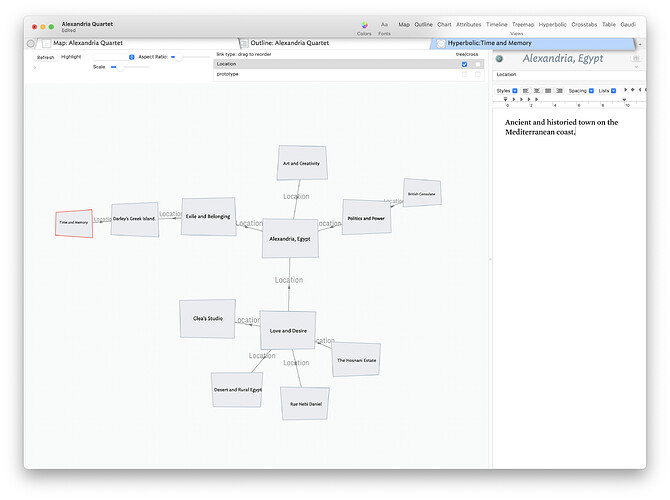Tinderbox Meetup, Nov. 30, 2024 (Video): Note Curation Strategies for Thinking within Tinderbox
| Level | Intermediate |
| Published Date | 12/1/24 |
| Type | Meetup |
| Tags | .replace, Action Code, Artificial Intelligence, ChatGPT, Export, IStamps, Thinking, Tinderbox, Zettlekasten, 5CKM, 5Cs of Knowledge Management, Eastgate, Identiy Praxis, Inc., Mark Berstein, Michael Becker, Tinderbox |
| Video Length | 01:57:35 |
| Video URL | https://youtu.be/rAekQ8b0gos |
| Example File | N/A |
| TBX Version | 10 |
| Host | Michael Becker |
In this Tinderbox meetup, we held an improvised master class on atomizing notes and using various note-curation strategies for thinking within Tinderbox. We also discussed the default Tinderbox document settings for generating prototypes and places when # or @ are in a note name and how Explode handles notes with . ! and ? in their names.
Master class on atomizing notes: Bruce Gale is working on a book. He has been collecting feedback from people and using Microsoft Gemini AI—his reviewers have suggested that he curate his writing along various categorial themes, including specific life events at different age milestones and locations. In this meetup, we demonstrated how an author could, using Explode, prototypes, attributes, and action code, curate their notes and their writing by associating categorical list/set items and automatically linking these categories to paragraphs within one’s writing—e.g., life events, locations, and age. We also reviewed using the Hyperbolic view to visualize these linked associations.
This meetup provided a small glimpse into the power of Tinderbox. It points out how Tinderbox, when perceived as a toolbox for thinking, can help someone unshackle themselves from the thinking constraints one experiences when working in word processors like Word and Google Docs or adopting pre-prescribed frameworks and workflows. However, as great as the session was, it was also limited due to our time constraints. There is so much more to consider, such as applying other relevant theoretical approaches for any project, as well as specifics that could be used to help Bruce with his project.
Remember. Like Bruce, you can bring your projects to the community and meetups, and we can work through them together.
It will be fun to see how this and related conversations evolve.


